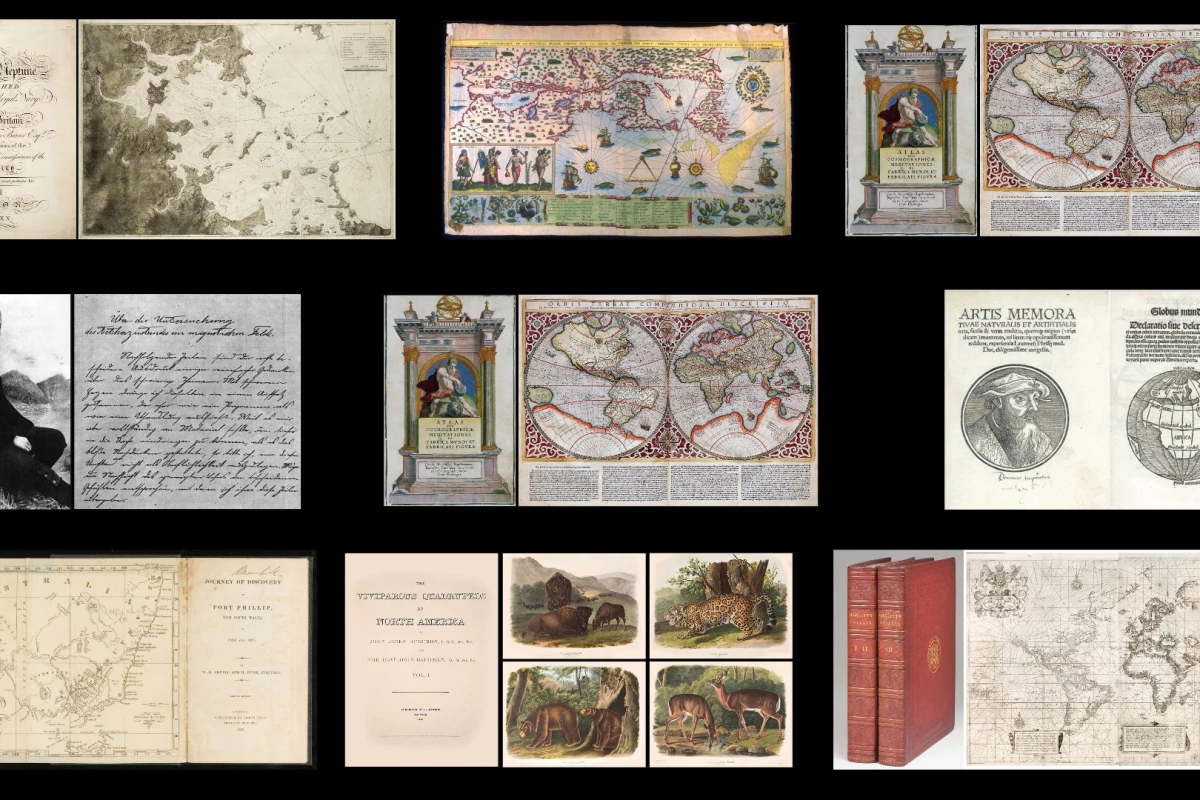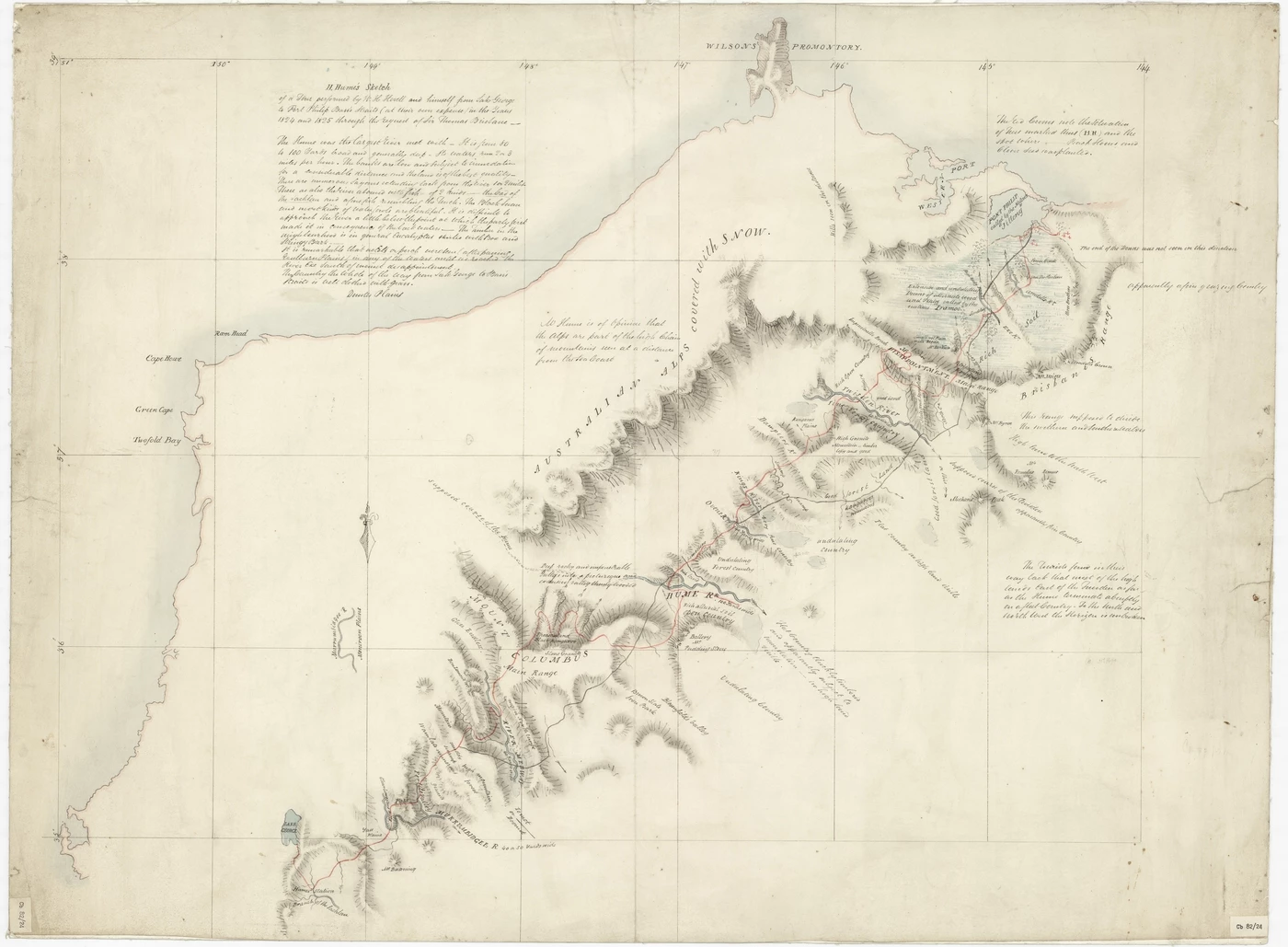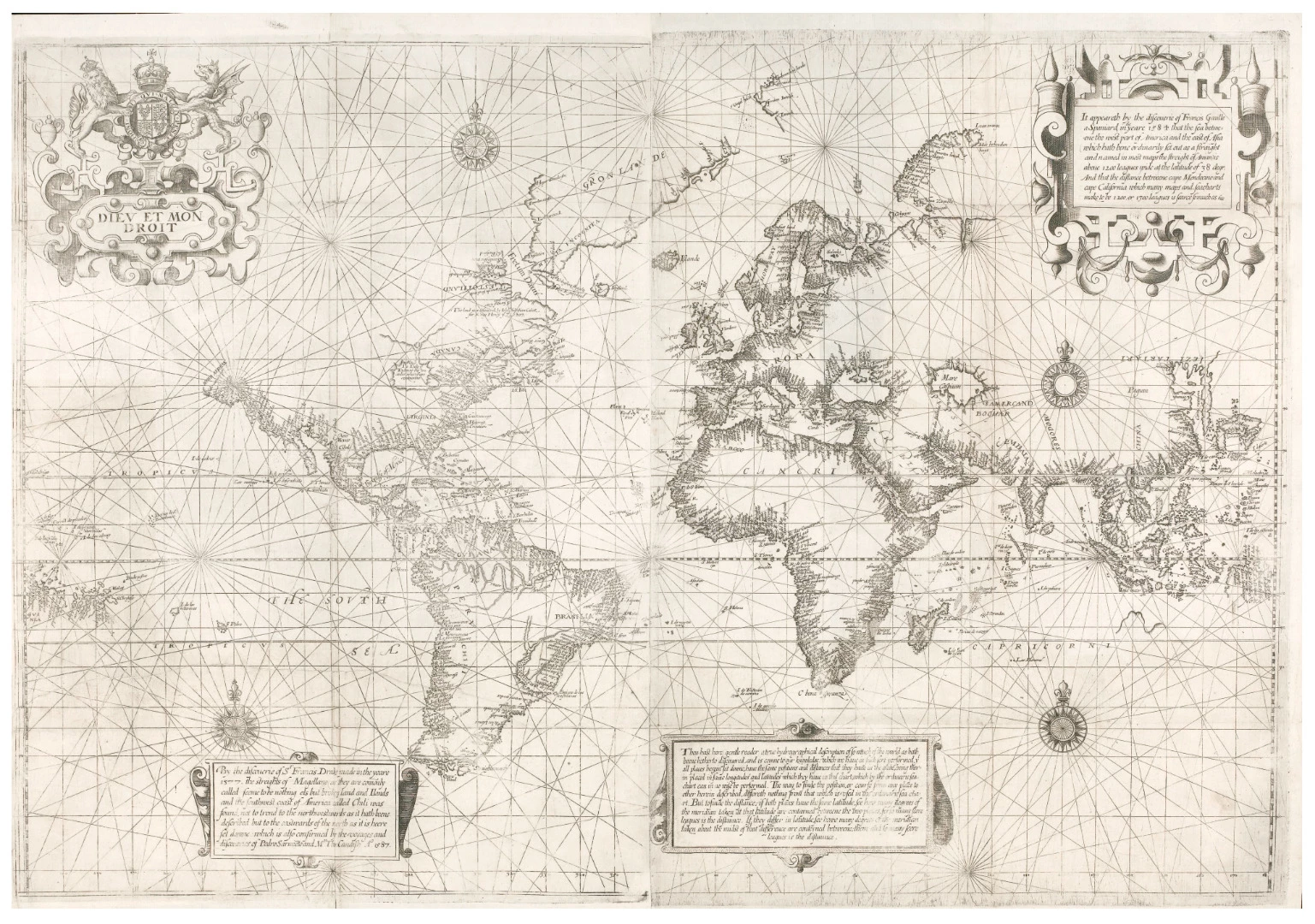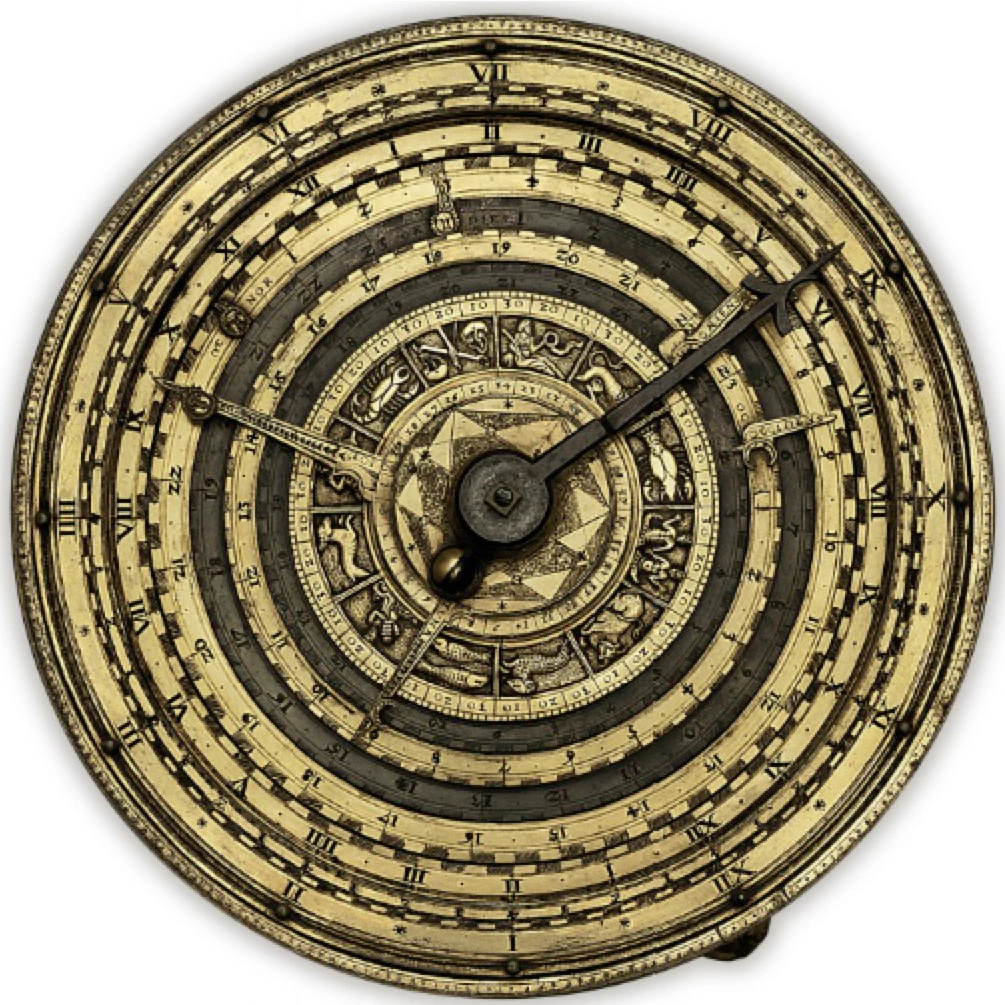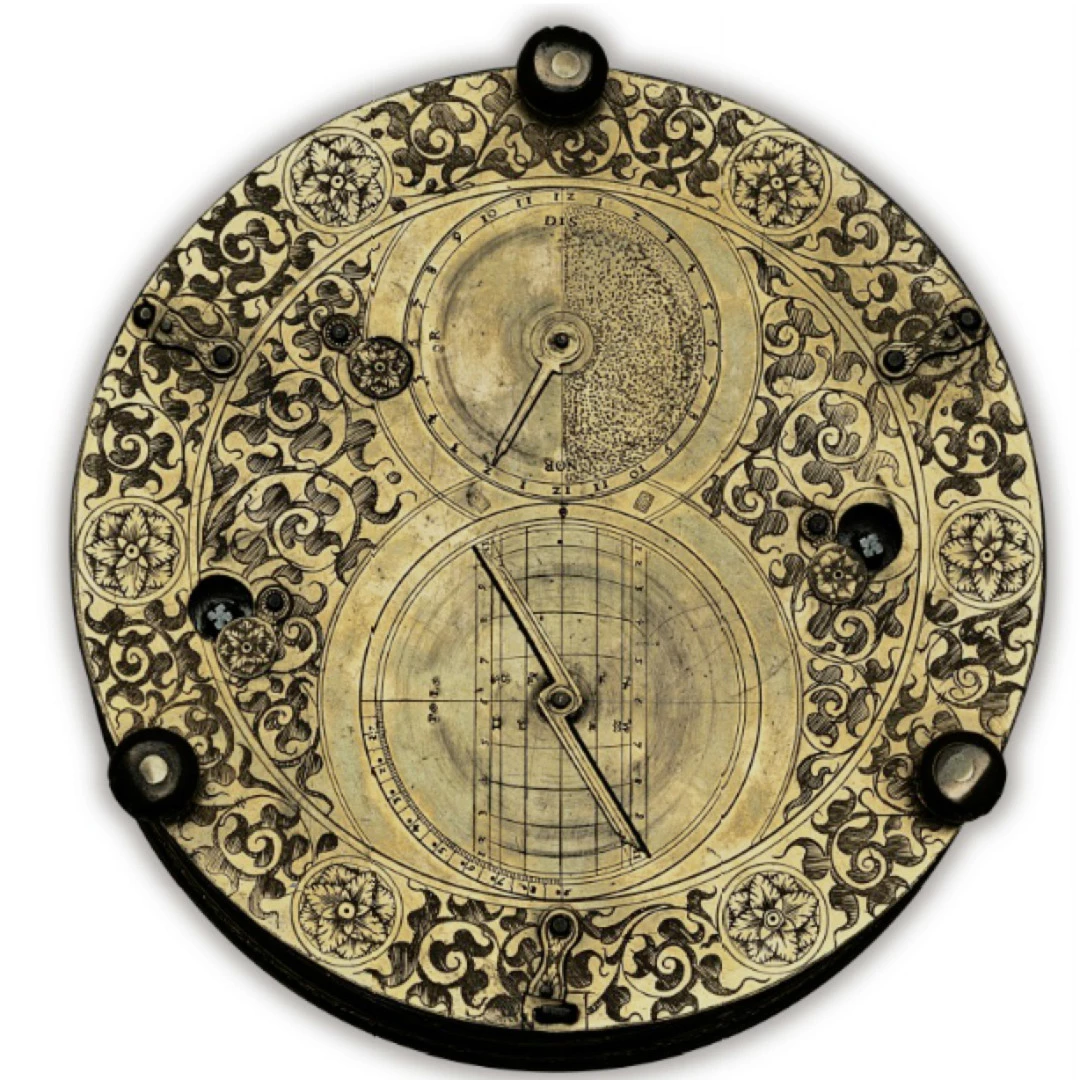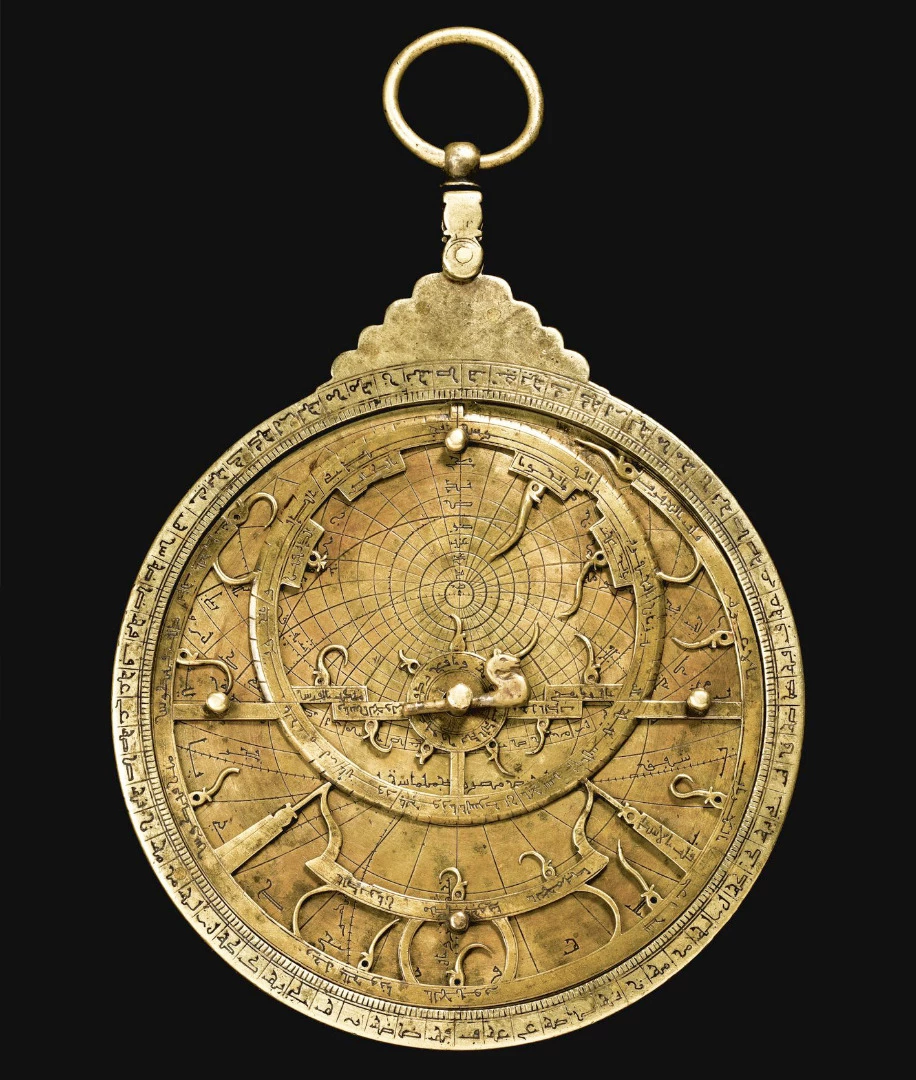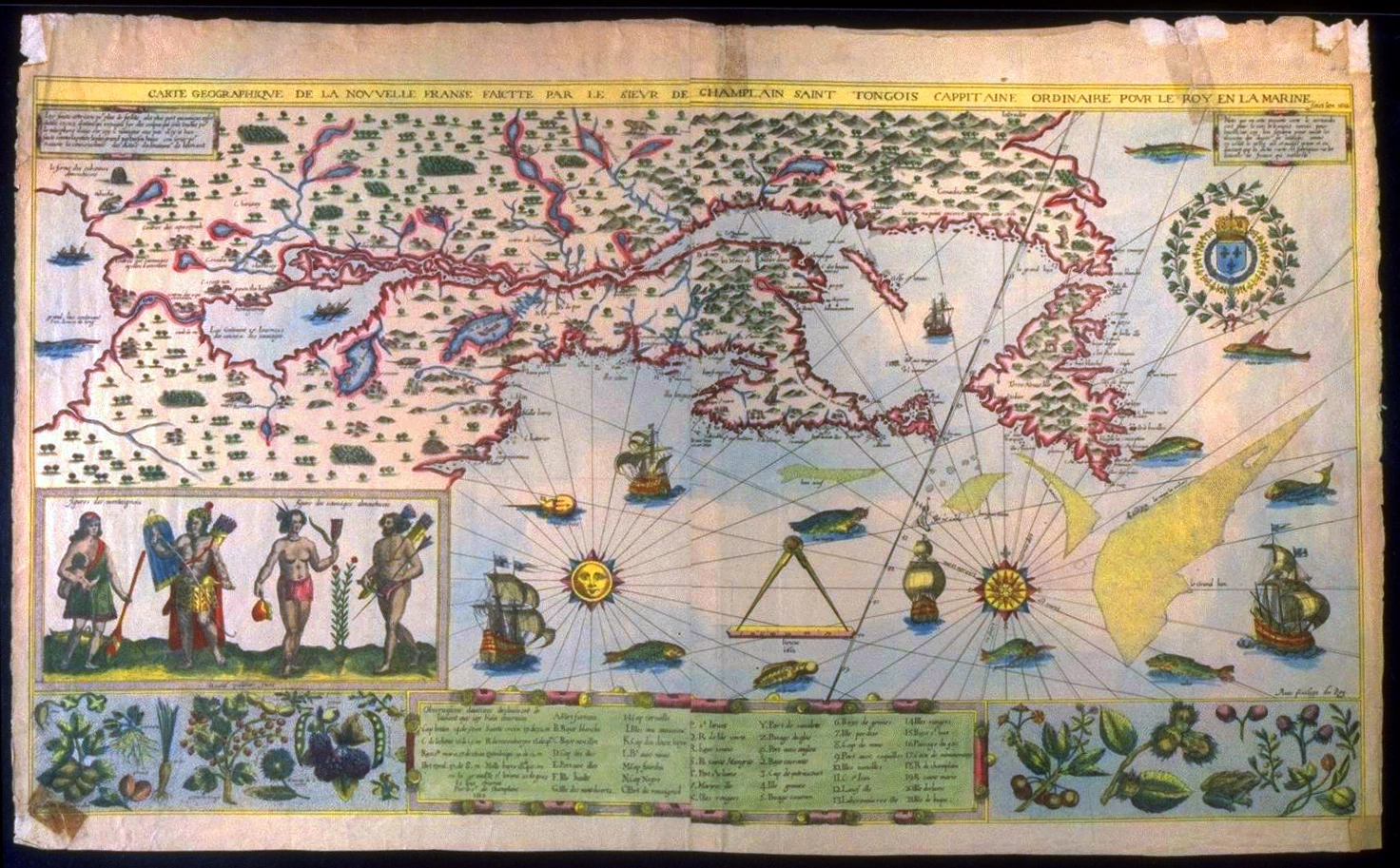UPDATED: January 13, 2018 | This is the second of a six-part series covering the most valuable scientific documents and manuscripts from #50 to #41. The introduction to the marketplace is the first part of the series, followed by The most valuable scientific documents of all-time #40-31, The most valuable scientific documents of all-time #30-21, The most valuable scientific documents of all-time #20-11 and The most valuable scientific documents of all-time: top 10. You may also like, The 50 most valuable scientific documents of 2016 and The 50 most valuable scientific documents of 2017.
50 - Les Voyages du Sieur de Champlain Xaintongeois by Samuel de Champlain

Price: $758,000
Estimate: $250,000 – $350,000
Created: 1613
Auctioned: Dreawatts Bloomsbury (New York), December, 2009
Significance: The renowned Siebert copy of this first edition landmark of French Americana and New World exploration, a pioneering work in ethnography and the first accurate mapping of the New England coast. One of the finest copies of this work extant, it previously sold in May, 1999 at a Sotheby's New York auction for $360,000.
From the auction description: One of the most important works of the 17th century, remarkable in its content and execution, being the work of one man – a gifted naturalist, an artist (trained as a portrait painter in France), a skilled cartographer and sympathetic ethnographer. Samuel de Champlain's account of his voyages of 1604, 1610, 1611 and 1613 are a key exploration narrative, one considerably enhanced by the author's lively illustrations in which he records his mapping of a vast area with unprecedented detail and accuracy, while also depicting the flora and fauna of the New World. The vignettes within the rare Carte Geographique de la Nouvelle Franse are an artist's rendition of new species, giving a hint of the varied and vast natural resources to be found in the New World. Of this monumental cartographic endeavor, Armstrong called the map, "not the work of a bureaucrat, but of a skillful pyschologist, promoter and politician…Champlain's map of 1612 is the most important historical cartography of Canada."
You can read the complete book (albeit in French) at Bibliothèque Nationale de France or see the main illustrations in detail at Canada's McGill Bibliothèque.

Some perspective on price: Interestingly, several other items of historical significance to the United States have sold for a similar amount at auction. These include a 1777 manuscript map of New York Island from the American Revolutionary War (above) that fetched $782,500, the original autograph manuscript by Julia Ward Howe of "The Battle Hymn of the Republic" that also fetched $782,500, W.I. Stone's 1823 "50th Anniversary" engraving of the 'Declaration of Independence' that also sold for $782,500, and a draft manuscript of the United Kingdom's Stamp Act of 1765 (an effort to heavily tax the colonies and a catalyst for the American Revolution), that sold for $755,000.
49 - The Decades of the Newe Worlde by Pietro Martire d'Anghiera

Price: $768,000
Estimate: $80,000 - $120,000
Created: Published 1555 but translated from works in other languages produced over the previous 75 years.
Auctioned: Christie's (New York), April, 2007
Significance: The full title of this book is The Decades of the newe worlde or west India, Conteyning the nauigations and conquestes of the Spanyardes, with the particular description of the moste ryche and large landes and Ilandes lately founde in the west Ocean perteynyng to the inheritance of the kinges of Spayne.
It is the first series of narratives on epic voyages voyages based on the first three Decades of Peter Martyr (Pietro Martire d'Anghiera – read the text in English here), which were originally written in Latin between 1511 and 1530. The book was edited and translated into English by Richard Eden and published in London by William Powell in 1555. The auctioned book sold for almost 10 times its estimate, mainly due to its significance as the first edition of the first collection of voyages printed in English, and the first work to contain narratives of English voyages.
Besides the three Decades of Peter Martyre, it contains a translation of that author's "De nuper sub D. Carolo repertis Insulis" (describing the voyages of Francisco Hernández de Córdoba, Juan de Grijalva, and Hernán Cortés), the Bull of Pope Alexander (by which he decreed that the world was to be divided between Spain and Portugal), as well as translations of the most important parts of the works pertaining to the maritime discovery of the New World by Oviedo, Maximilian of Transylvania, Vespuccius, Gomara and others.
This book is quite a compendium of important work, as it also contains the first printed English treatise on the compass, the first description of "What degrees are," and "A demonstration of the roundness of the Earth."
In the book's preface, the colonization of North America by the English is advocated for the first time and according to The art of navigation in England in Elizabethan and early Stuart times, "for over a quarter of a century it proved to be the English source-book of geographical and navigational knowledge" and "as such it was to be of the utmost value to men like Hawkins and Drake."
Emphasizing this last point is the book's provenance - this book was Roger North's copy. In 1617, North had sailed with Sir Walter Raleigh in his second expedition to Guiana in South America in search of the mythical "city of gold" known as El Dorado, and in 1620, North was a prime mover behind attempts to establish an English colony on the River Amazon delta. The book bears his signature on the title as well as his motto, "Durum Pati," believed to be an abbreviation of Horace's "Durum, sed levius fit patientia..." ('Tis hard! But that which we are not permitted to correct is rendered lighter by patience). The book is available in full on the Internet Archive.
Some perspective on price: The baseball hit by Barry Bonds for career home run #756, (breaking the all-time home run record for the American MLB), sold for $752,467 at an SCP auction in 2007.
48 - The Atlantic Neptune published for the use of the Royal Navy of Great Britain by Joseph Des Barres

Price: $779,200
Estimate: $400,000 - $600,000
Created: 1774-1779
Auctioned: Christie's (New York), April, 2007
Significance: Swiss cartographer Joseph Frederick Wallet Des Barres (1722-1824) was a member of the famous Huguenot family who studied mathematics under Daniel Bernoulli at the University of Basel, then military surveying at Great Britain's Royal Military Academy, leading to a commission in 1756 into the Royal Americans and a role as a cartographer in the Seven Years' War. Using documents captured at Louisbourg, Des Barres compiled a large-scale chart of the St. Lawrence River and Gulf, which enabled the British Navy to navigate its warships to and take control of the French capital at Quebec. The victory demonstrated the benefits of accurate marine surveys, and Des Barres' capability in particular, resulting in the admiralty providing him with the resources to accurately chart the coast of Atlantic Canada, and the eastern seaboard from New England to the West Indies. This book resulted some 17 years later: a maritime atlas that set the standard for nautical charting for half a century.
Some perspective on price: Several copies of this work have achieved similar high figures, and it is clear that both mariners and historians considered it to be "the most splendid collection of charts, plans and views ever published."
47 - The Ripley Scroll by Sir George Ripley

Price: $781,460 (£584,750)
Estimate: £200,000 - £300,000
Created: 1624
Auctioned: Christies (London), December, 2017
Significance: Not all that long ago, alchemy was a legitimate science, and many of science's best known early names studied the subject prior to it branching off to become chemistry: Roger Bacon, Sir Isaac Newton, Robert Boyle, Tycho Brahe, Johannes Kepler, Thomas Aquinas and Sir Thomas Browne, among many.
There's still a tendency for us to dismiss the subject as nonsense, even though it was an embryonic attempt to define scientific method and to understand the make up of our world by people who intuitively knew they were on the right track. Substances may not have been made of earth, wind, fire and water, but the knowledge that substances were made up of the same fundamental elements, could be transformed and were soluble, was a step in the right direction. Robert Boyle became the father of modern chemistry through seeking the truth and his exploration of alchemy did not detract from his ultimate achievements.
Two of the best known and most authoritative early works on the protoscience of alchemy are attributed to Sir George Ripley (circa 1415-1490), one being The Compound of Alchemy and the other, the Ripley Scroll, a 3.7-meter-long (12-ft) illustrated manuscript of which there are 23 known copies. Twenty-two of those copies are in museums and libraries, with just one copy in private hands, and that copy went to auction in London at Christies Valuable Books and Manuscripts Sale on December 13, 2017.
A mix of English and Latin verse and images, the scroll supposedly details the process of how to manufacture the Philosophers' Stone, (the means of converting base metals into noble metals, (not necessarily gold, though that became the default goal as success brought infinite wealth), though a close look at the illustrations (the above image depicts increasing magnification of just one frame) shows them to be equally as cryptic as the verse.
This particular copy of the Ripley Scroll was produced on vellum around 1624, and went to auction with an official expectation between £200,000 and £300,000. As the only copy in private hands, it understandably exceeded its estimate with a final price of $781,460 (£584,750).
The auction site has a great article explaining Alchemy and the importance of the Ripley Scroll by Kay Sutton, Christie's director of Medieval and Renaissance Manuscripts. And if you'd like to view a genuine Ripley Scroll, the British Library's copy is on display until February 28, 2018 as part of an exhibition entitled Harry Potter: A History of Magic.
46 - Atlas Sive Cosmographicae Meditationes De Fabrica Mundi Et Fabricati Figura by Gerard Mercator

Price: $783,346 (£422,400)
Estimate: £60,000 — £80,000
Created: 1595
Auctioned: Sotheby's (London), October, 2006
Significance: The first atlas to be so called. The first four parts had been published between 1585 and 1589 (see previous lot). To these were added a fifth and final part, Atlantis pars altera, published in 1595, a year after Mercator's death, and overseen by his son Rumold. This part includes maps of the world and the continents. The complete atlas was dedicated to Queen Elizabeth and the whole was preceded by the famous engraved general title-page showing Atlas measuring the world with a pair of dividers. Interestingly, Mercator refers to Atlas, King of Mauretania (now Morocco), a mathematician and philosopher who is generally credited with having made the first celestial globe, not the mythical Greek god Atlas, whose punishment was to carry the world and heavens on his shoulders. We humans certainly have a propensity to get our stories mixed up.
45 - Discorsi e Dimostrazioni matematiche, intorno a due nuove scienze by Galilee Galileo

Price: $791,190 (EUR €727,919)
Estimate: €700,000 — €900,000
Created: 1638
Auctioned: Pierre Berge and Associes, Paris, April, 2017
Significance: A significant work in the history of science, this dedication copy of Galileo Galilei's last great work, Discorsi e dimostrazioni matematiche, intorno due nuove scienze attenenti alla mecanica & i movimenti locali (Discourses and Mathematical Demonstrations Relating to Two New Sciences) is regarded by many as the world's first Physics textbook.
This book was written in a style similar to Dialogo sopra i due massimi sistemi del mondo(Dialogue Concerning the Two Chief World Systems), in which three men (Simplicio, Sagredo, and Salviati) discuss the subject, with Simplicio representing Galileo's early beliefs, Sagredo representing his middle period beliefs, and Salviati his ideas at the time of writing.
Discorsi e dimostrazioni matematiche was published in 1638, but the Roman Inquisition had banned the publication of Galileo's works in 1632 due to his work Dialogo, which proposed the heliocentric theory. Galileo, who was effectively under house arrest, consequently gave a handwritten copy of the work to the Ambassador of France to the Holy See. Read on for the full story, which explains why the dedication copy is so very special.
44 - Viviparous Quadrupeds of North America by John James Audubon

Price: $793,000
Estimate: $600,000 – $700,000
Created: 1845 – 1854
Auctioned: Guernsey's (New York), December, 2012
Significance: The most expensive of numerous copies of John James Audubon's second masterpiece. "Viviparous" means birthing young from within the body, so this book is essentially a study of North American mammalian wildlife, and like Audubon's best known "Birds of America," each is superbly illustrated in its natural habitat. Equally as as impressive and sweeping as his ornithological work, the "Viviparous Quadrupeds of North America" is the result of the artist/naturalist's years of field research, travel, and seemingly endless study and is the outstanding work on American animals produced in the 19th-century. The entire book has been digitized by the University of Michigan's Special Collections Library and is available in high resolution for free download and use, with attribution.
43 - Globus Mundi

Price: $837,227 (€600,000)
Estimate: €500,000
Created: 1509
Auctioned: Alde (Paris), February, 2010
Significance: "Globus Mundi" does not list an author, but is considered so valuable because it is the first book on cosmography to officially use the term America as the common name to describe the "New World." It was published in Strasbourg (Germany) in 1509 by Johann Grüninger.

Some perspective on price: An astrolabe made for the Duke of Parma by Erasmus Habermel sold for $841,070 (£540,500) at a Christies (London) auction in October, 1995.
42 - Aves Ad Vivum Depictae A Petro Holysten Celeberrimo Picture by Pieter Holsteyn the Younger

Price: $850,0000
Estimate: $300,000 – $500,000
Created: circa 1638
Auctioned: Sotheby's (New York), December, 2015
Significance: Pieter Holsteyn II (1614 – 1673) worked closely with his father, Pieter Holsteyn the Elder, in producing fine gouaches and watercolor natural history portraits and botanicals and grew to become one of the Dutch Golden Age watercolor masters. His particular skill was the delicate, but detailed depiction of many of the new and exotic species being returned to Amsterdam from the voyages of the Dutch East India Company. This particular book is extremely rare as most of the natural history albums produced in the 17th century have long since been broken apart and the images sold piecemeal. The book is renowned for its famous illustration of the now extinct White Dodo.
Some perspective on price: A similar collection is for sale at Arader Galleries in New York at a price of $4.5 million.
41 - William Caxton's The Myrrour of the Worlde

Price: $866,628 (£529,500)
Estimate: £120,000 - £160,000
Created: Translated by William Caxton (c. 1422 – c. 1491) and printed in 1481.
Auctioned: Christie's (London), July, 1998
Significance: The Myrrour of the Worlde was the first illustrated book to be printed in England, printed and published by William Caxton in 1481. The original source of the material within the sparsely-illustrated encyclopedic work is a matter of much debate. The University of Glasgow believes it to be translated from a prose encyclopedia written by Gautier de Metz and entitled L'image du monde. The University Library's Special Collection Department holds a copy and has an extensive article on the book, summarizing its significance thus: "Encyclopedic texts were very popular throughout the Middle Ages. During this period it was commonly believed that it was possible to create one volume digests of all knowledge. Aimed at a general audience, such works were incredibly useful at a time when access to libraries was limited and book ownership itself was relatively rare. Unlike vast modern encyclopedias, these medieval works were not arranged alphabetically for quick reference. Rather they were organized systematically, and designed to be read all the way through."
The article above is the second of a six-part series covering the most valuable scientific documents and manuscripts from #50 to #41. The introduction to the marketplace is the first part of the series, followed by The most valuable scientific documents of all-time #40-31, The most valuable scientific documents of all-time #30-21, The most valuable scientific documents of all-time #20-11 and The most valuable scientific documents of all-time: top 10. You may also like, The 50 most valuable scientific documents of 2016 and The 50 most valuable scientific documents of 2017.
Continue reading the third part of the series, numbers 40-31.
